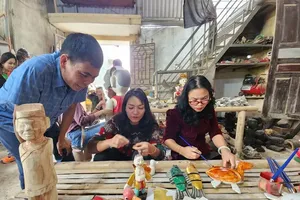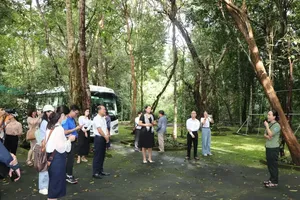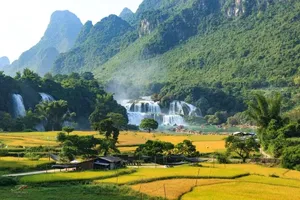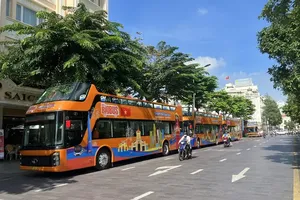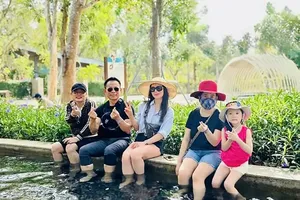In 2024, Vietnam's tourism sector experienced robust growth, surpassing its pre-pandemic peak. Despite the sharp increase in visitor numbers, the tourism sector has yet to fully leverage its intrinsic advantages, primarily due to the absence of distinctive, nationally branded tourism products.
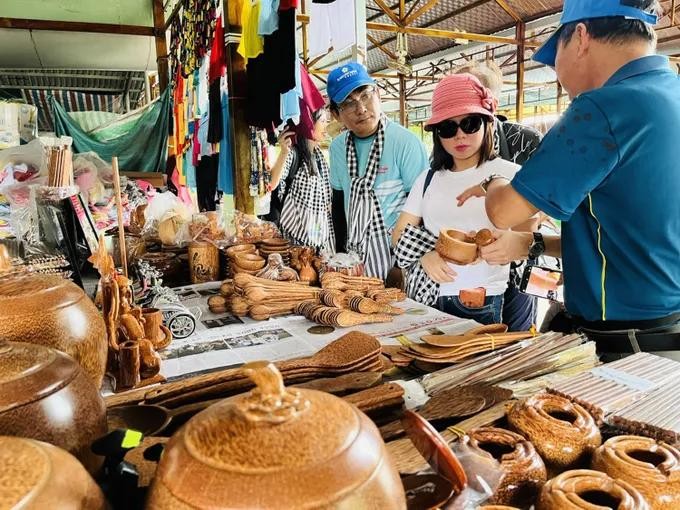
With years of experience in the tourism sector, Director Thu Thuy of a travel company in Ho Chi Minh City highlighted the significant scarcity of quality national brand tourism gift products in Vietnam. She recounts that in the past, her company would present partners or tour groups from Australia, the U.S., and Europe with two gifts upon their departure such as coffee and silk. However, after discovering the silk products were counterfeit, only coffee remained as an offering.
She further revealed that when Vietnamese tourists visit Korea, the expenditure on 'national treasure' products like ginseng and red pine essential oil often exceeds the tour price by several times. Similarly, tourists in Thailand rarely miss purchasing snake-based medicines from the Royal Snake Research Center. While a tour might cost around VND7 million per person, the cost of these medicines can sometimes be even higher.
It is visible that "Made in Vietnam" products—particularly OCOP (One Commune One Product) —are widely available to tourists across the country. However, in the eye of international visitors, while there is an abundance of products, OCOP items' perceived value remains low.
For instance, in Ho Chi Minh City, international cruise passengers—who typically represent a high-spending segment—are often taken by travel agencies to markets such as Ben Thanh, Binh Tay, and An Dong to purchase souvenirs like keychains and handicrafts. With the exception of coffee, most of these items are generic, widely available across regions, and lack distinctive national identity—resulting in tiny economic value.
Data from the Ministry of Agriculture and Environment indicates that in 2024, Vietnam had approximately 14,200 OCOP products rated 3 stars or higher, with 2.1 percent being 5-star products or having 5-star potential, signifying high quality. However, despite the abundance of OCOP products, few achieve national brand status, widely sold across Vietnam’s North, Central, and South regions with significant appeal to tourists.
Currently, Ngoc Linh ginseng, dubbed Vietnam’s “national treasure” due to its exceptionally high saponin content, faces challenges in becoming a national tourism brand, according to some Ho Chi Minh City tourism businesses. Key obstacles include limited production, lack of large-scale or systematic cultivation to meet domestic demand or create high-quality gift products, and its high cost, which discourages potential buyers.
Most critically, the difficulty in distinguishing authentic Ngoc Linh ginseng from fakes breeds consumer distrust. In contrast, Korean ginseng benefits from guaranteed authenticity, a wide price range—from premium aged ginseng to affordable fresh or powdered options—unique packaging, and compelling storytelling, making it highly appealing to tourists and encouraging purchases.
Particularly, strict and decisive penalties must be imposed on acts of counterfeiting national products. These products should be crafted into compelling stories, feature attractive designs, and be showcased at major tourism hubs.
At that juncture, Vietnam's tourism industry is poised to become a veritable 'golden goose'. It will not only draw visitors with its breathtaking landscapes and exquisite cuisine but also inspire such delight that they are inclined to spend generously.
Vietnam's tourism industry is missing out on significant revenue due to a lack of high-value products that entice tourists to spend, experts warn. Phan Yen Ly, a tourism product design specialist, highlights that countries like South Korea, Thailand, and Malaysia excel by infusing their products with cultural significance, weaving in stories, experiences, and beliefs that transform them into compelling symbols. In contrast, Vietnamese products remain disconnected from tourism experiences, failing to create an appealing ecosystem that encourages visitors to 'buy with their eyes' and eagerly spend.
Deputy General Director Pham Anh Vu of Viet Tourism Media Joint Stock Company pointed out a key weakness in Vietnam’s agricultural tourism: the absence of specialized stops where agricultural products take center stage. Currently, international tourists primarily visit scenic spots, historical sites, or resorts, with few tours designed to showcase coffee plantations in the Central Highlands or ginseng farms in Kon Tum for immersive experiences and direct purchases.
Additionally, booths at airports, hotels, and tourist areas are flooded with low-value, stereotypical souvenirs like keychains, T-shirts, and cloth bags, further limiting spending opportunities.
Vietnam's high-end agricultural products are rarely showcased, and when available, their unappealing designs deter tourists from purchasing them as gifts. Director Nguyen Bao Toan of the Vietnam Tour Guide Operation Center at Vietravel Tourism Company emphasized the need for a coordinated strategy between the tourism industry, relevant ministries, and the Government to promote 'national specialties' that resonate with international visitors. He suggests identifying a select few high-potential products to develop into national brands, mirroring successful approaches in other countries.
Furthermore, clear planning and supportive policies are essential to attract investment and elevate these products' appeal.

